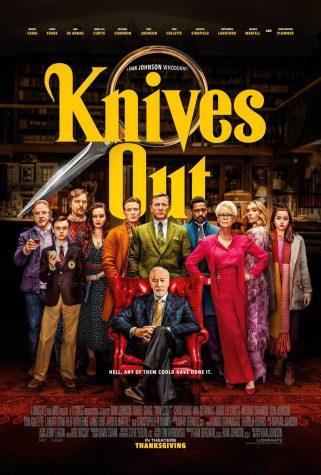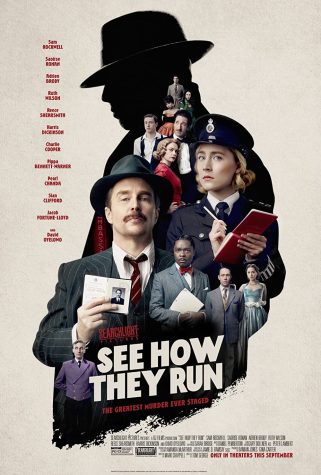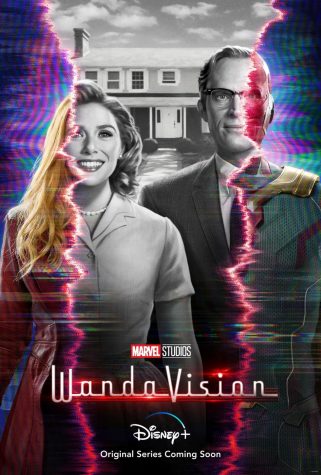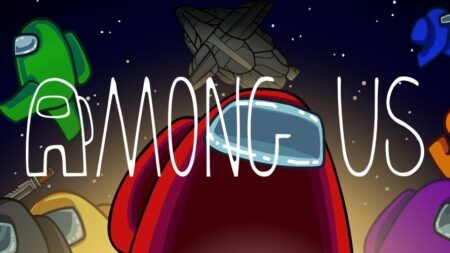Book Recommendations from the Jerds 2018
Averie Sargent – “A Song for Somme”
“You know as well as I do that survivors do not take no for an answer.” Written by Jennifer Malech, “A Song for Somme” tells the story of classical pianist Lloyd Fox returning to Oxford University from America in 1922 to study music composition. Lloyd then reunites with his friend Charles Atwood, who had served alongside him during World War I.
Atwood insists that jazz music will take classical music’s place in the post-war society, but Fox dismisses this idea, continuing to focus on transforming his experiences at war into classical compositions. While Fox seeks to find joy after his younger brother’s death, Atwood takes to a free-spirited Irish girl named Cherry, who is also studying music composition at Oxford. However, this brings Lloyd and Cherry to face secrets from the past.
This book will utterly submerge you into Fox’s rough reality and draw you into Cherry’s haunting melodies as they both collide, shedding light on the events that took place in the past. “A Song for Somme” beluges you to believe a simple story, then reveals the much deeper truth behind the character’s lives — you are hurt by what hurts Lloyd and you are captivated by Lloyd’s persistence to get what he wants, Cherry’s love for freedom, and how Charles hides his own insecurities with his wealth. The plot and setting are captivating, while teaching the lesson that Malech writes so well: redemption.
Adelae Norwood – “The Color Project”
Welcome to “The Color Project” by Sierra Abrams, a vibrant novel following the summer after Bernice Aurora Wescott’s senior year. Throughout her life, she has harbored a secret unbeknownst to anyone save for her family: her name.
After meeting the mysteriously colorful Levi, the town’s golden boy, Wescott throws herself into the Color Project, a charity dedicated to helping those in need – of anything. And then disaster strikes, threatening to tear her life to shreds. As her life crashes down around her ears, Wescott realizes that she must tell Levi her real name or lose everything that she has ever loved.
Emotional diversity is an (unfortunately) uncommon trait in contemporary YA novels such as “TCP,” and yet, it’s all here. Wescott’s triumphs and tribulations are your triumphs and tribulations, as well as her hopes, her fears and her love. Her tears ran down my cheeks, her laughter came out of my chest and her love from my heart.
“TCP” envelops you so fully, so deeply, that it lingers after the final page has turned. It doesn’t haunt you like “Paranormal Activity,” but it stays. To put it lightly, “TCP” broke me and remade me and brought on one heck of a lot of belly laughs. I can’t say anything else without spoiling the book, so let me leave you with this: you gain nothing by neglecting to read “TCP” and everything by indulging in it. And hey – belly laughing is healthy.
Crystal Sung – “Shadow of the Hegemon”
Known for his first masterpiece “Ender’s Game,” Orson Scott Card is absolutely brilliant in this sequel. Ender Wiggin and his team, bred for war against the Formics, have saved humanity. But as Ender sets off to be part of a colony and redeem himself in the Enderverse series, the story of Bean, the prodigy of prodigies, diverges into the Ender’s Shadow series. Shadow of the Hegemon exemplifies the blend of political thriller and science fiction.
Bean, or Julian Delphiki in the real world, has returned to his biological family — a jaded war hero unable to connect with anyone. But the world order is crumbling as each country scrambles to form teams of former Battle School geniuses to further its own agenda, and Bean’s old enemy Achilles is the one pulling the strings. Petra Arkanian, Bean’s old friend whose intelligence is second only to Bean’s and Ender’s, is captured by Achilles. Bean barely escapes with his life and allies with Ender’s aggressive older brother Peter Wiggin to save Petra — and restore the international order.
This book is written with plot twists, from clandestine kidnappings to large scale military confrontations, but somehow Card always strikes the perfect balance of snarky conversation, emotional exploration, moral ambiguity and intense moments. Not only does Card build his characters and put them to the test, but he also essentially predicts the status quo of international relations. Even the side characters— a Chinese colonel, for instance— brought me to tears with their actions. The stakes are high, loyalties ignited, tensions escalated and this book sublime.
Anastasia Reimann – “I Am the Messenger”
After reading Zusak’s more well-known classic “The Book Thief,” I fell in love, and I knew I needed to put Zusak on my list of authors to watch for. Known simply as “The Messenger” in other countries, “I Am the Messenger” follows 19-year-old cab driver Ed Kennedy, a young man without much direction or excitement in his life until the day that he coincidentally witnesses and stops a bank robbery using his friend’s trash heap of a car to stall the robber.
Shortly after the failed robbery, Kennedy receives his first assignment: three addresses written on a playing card. With this card, Kennedy becomes the “messenger,” helping the people of his town and inflicting justice based off of the cards’ prompts. But soon the cards send Kennedy on personal missions, too, prompting him to heal both the lives of strangers and of his friends, thereby allowing him not just to be an anonymous savior for the people in his town, but a better friend and overall, a better person. Yet, the question remains: if Kennedy is the messenger, who’s sending him the messages?
Though it’s short, this novel has so many enjoyable aspects: Kennedy’s coffee-drinking dog, his entertaining rapport with his very vibrantly-characterized friends or Kennedy’s unreciprocated feelings for his friend Audrey. However, what makes this novel most endearing is Ed Kennedy’s oblivious-yet-snarky personality, which permeates the prose and had me laughing hard right from the hilarious first scene. Even the swearing and sexual content present in the book ultimately give readers a more vivid portrayal of the boy Ed Kennedy is and the man he’s becoming.
This is a story about a person who makes a difference in his community. But more importantly, it’s a reminder that we all possess the potential to make a difference in our own lives and the lives of those we love. It’s a heartwarming book that’ll put a smile on your face and restore your hope in humanity, even if just for a few hundred pages.
Saryn Mandak – “All the Bright Places”
“Take it from me, the worst thing you can do is look down,” said Theodore Finch. Violet Markey is popular, and Theodore Finch is the school freak in the novel “All The Bright Places” written by Jennifer Niven. Markey and Finch are two high school seniors that might have never gotten the chance to meet if it wasn’t for their crazy coincidence: they almost throw themselves out of the same window at the exact same time.
Finch suffers from undiagnosed bipolar disorder; he thinks about suicide every day. Markey is counting the days until graduation. She has been depressed since the death of her sister Eleanor in a car accident the previous year. Life now has no meaning for Violet. She refuses to ride in a car and feels guilty for the occasional moment of laughter or enjoyment.
In Finch and Markey’s geography class, the teacher assigns a special project, in which students must pair up and compile a report on unique places in their home state of Indiana. Finch insists that Violet and he work together on the project. Though Markey initially feels that Finch forced her to do the assignment with him, Finch extols the wonderful opportunity they have to explore the little-known places of Indiana and find an adventure in it. He makes up rules for their project. They have to use maps, not apps. They will take turns deciding where to explore, and they must leave something at every place they go.
Throughout the story readers see that Finch has a crush on Markey and is eager to help her see the joy in life. Markey is intrigued by Finch’s eccentricities. He is highly intelligent but not nerdy. “The Bright Places” examines the idea that despite your love for someone, it isn’t always possible to save them. The book constantly explores life and death and it shows readers just how valid life is, and it comes with an overpowering message that you should live your life to the fullest.
Overall, the book is a must-read. Your longing for the characters to pull through keeps you turning page after page; you can’t put it down. It is one of those books that you still remember months after reading it because the characters and the storyline touched your heart in a way that makes it impossible for you to forget them, one of those books that you can link back to your own life, reminding you how fragile everything is and how important it is to treasure every moment before it can be snatched away.
Hope Stengler – “The Great Gatsby”
For some people, reading isn’t a passion. I personally would not have picked up “The Great Gatsby” if I hadn’t been assigned to read it in my English class. To my surprise, I was very engaged in the book, and it kept my attention throughout the whole story.
Jay Gatsby, the handsome billionaire and crux of the novel, is a very mysterious man. He owns a luxurious mansion where he throws famously extravagant parties and has made quite the reputation for himself. The odd thing, though, is that he’s would never to be seen at his parties, leaving everyone to wonder just who Gatsby really is and where he’s from. Another key character in the book, Daisy Buchanan, Gatsby’s neighbor across the bay, is caught up in a unfulfilling marriage with a man named Tom. Gatsby and Daisy are former lovers, and Gatsby is still not over her.
Nick Carraway, newcomer to West Egg and narrator of the story, recounts what happens as Daisy rekindles her love for Gatsby again, even though she has a child and marriage to take into consideration. Though Carraway isn’t much of a guy to say what’s on his mind, Gatsby and he become friends through Gatsby’s parties, and readers learn more about this enigmatic neighbor.
The fun aspect of this book that really kept my attention and focus was the scandal throughout the story. There was always some drama going on; someone dying, someone falling in love, and someone betraying their friends. Different type of stories attract different audiences, so for those who aren’t the best at staying focused while reading, this is the book for them.
Usually the endings of books can be pretty predictable, but not in “The Great Gatsby.” Everything happened so suddenly in the end; the story wrapped itself up perfectly. The unexpected actions made for a great ending. The characters all came to life and made intriguing decisions that made the story entertaining and enjoyable to read.
Zoe Giammaria – “The Goose Girl”
Shannon Hale’s “The Goose Girl” is a compelling story inspired by the original Brothers Grimm fairy tale. It follows the the Crown Princess of the fictional kingdom of Kildenree, Anidori-Kiladra Talianna Isilee, nicknamed “Ani.” As a young child, she was taught by her aunt to speak with animals. However, after the death of her aunt and, later, her father, Ani’s mother forces her to marry the prince of the neighboring kingdom to secure peace.
Just when Ani thought nothing could get worse, she is soon faced with the betrayal of her best friend and lady-in-waiting, Selia. After wandering in the forest for many days, a small family finds her and allows her to travel with them to the kingdom. Once Ani disguises herself as the palace goose girl and befriends the other palace workers, she discovers that Selia is pretending to be the Crown Princess to marry the prince and start a war between her old kingdom and this one. Ani must hide her identity and avoid being spotted by Selia and her soldiers to take back her rightful place at throne, all the while discovering that her powers don’t just stop at talking with animals.
Hale uses descriptive storytelling and ingenious expertise to turn an otherwise overplayed theme into a new and original tale. She allows the reader to relate to the characters and feel their adventures, hardships and triumphs as if they were your own. “The Goose Girl” explores themes of action and bravery while maintaining a humorous outlook, making it nearly impossible to put down once you start reading it.
Aubrey Gehman – “The Book Thief”
It’s not often that upon hearing a book’s title, you are swept away by a flood of emotions that cause you to so desperately want to reread it, over and over again –– just to feel the same way as when you first read it. Every time that my eyes fall upon “The Book Thief” on the top shelf of my desk, I am overwhelmed by that feeling, along with feelings of joy, regret, fear, confusion and most of all, change. Other books have changed my life, but not like this. When you read “The Book Thief,” you will fall in love. With the characters. With the ideas. With the execution. With the illustrations.
You won’t ever read a more beautifully crafted, magnificently written, and overall breathtaking book as “The Book Thief.” Written by Markus Zusak in 2005, “The Book Thief” travels through time, pushes past boundaries and defies stereotypes. In this powerful novel narrated by Death itself, the lives of young Liesel Meminger and Rudy Steiner unfold in Nazi Germany, circa 1939. Throughout the course of the 550-page book, the characters face triumph and tragedy, gain and loss so powerfully that the reader not only feels it too, but feels as if they were a character in the book themselves.
As a way to cope with the loss of her family, Meminger begins to steal –– not food or water to sustain her physical needs, but books. Growing up in war-torn Germany brings about its challenges for Meminger, especially when her foster family hides a Jew in their house. When an unlikely friendship forms between Meminger and the Jew, Max Vandenburg, they find hope in each other. The pair face the unthinkable as they struggle to survive in a world where they are not wanted. From the loss of family members to forgotten shoes to embarrassing stories to the absence of justice, “The Book Thief” will capture your heart and change your world.
Amber Bacardi – “The 5th Wave”
If you’re looking for a page-turner to keep you satisfied through summer downtime, Rick Yancey’s modern sci-fi masterpiece “The 5th Wave” is a must-read. This 475-page book puts an original spin on your typical post-apocalyptic alien invasion story, with a smart but vulnerable heroine.
The breathtakingly fast-paced story follows 16-year-old Cassie Sullivan as she attempts to survive in a world devastated by waves of alien invasions that have diminished the Earth’s population. The first wave consists of an electromagnetic pulse that plunges the planet into darkness. The second wave is a tsunami that drowns the world’s coastlines. The third wave wipes out 99 percent of the remaining population with a viral disease. Then in the fourth, the remaining survivors are stalked by humans implanted with alien consciousnesses. No one can be trusted. This finally leads to the fifth wave — a mystery that unfolds along with the story itself.
Although her chances of survival seem increasingly slim with each wave, everything changes when Sullivan meets Evan Walker, a hunter shrouded in mystery. With saving her little brother, who was kidnapped by “The Others,” as her sole motivation, Walker is Sullivan’s only hope to rescue Sammy. Filled with big heroics and even bigger surprises, this heartfelt and paranoid novel will keep you turning pages until the very end.
Erin Marquez – “The House of the Scorpion”
Nancy Farmer’s “The House of the Scorpion” deals with serious issues such as illegal immigration and the drug trade in such a skillful way that it’s no wonder that this book has won three awards. Farmer successfully incorporates these present-day provocative issues into a coming-of-age story of a young clone trying to understand his existence.
The book follows the story of a young boy named Matteo Alacrán, a clone of El Patrón. El Patrón is the drug lord and leader of a fictional country called Opium. The story takes place in the future, but Opium still resembles where El Patrón grew up. In this society, clones are often looked down upon and seen as monsters, but not to El Patrón; Alacrán is given the best education and luxuries that El Patrón can offer. Alacrán truly believes that El Patrón loves him until Alacrán realizes the true reason of his existence.
The book has many twists and turns that you wouldn’t expect with an unexpected ending towards the end that’ll make your heart drop. “The House of the Scorpion” gives you an insight on what families have to go through when trying to immigrate to a different country to provide a better life for their children and what happens when things don’t go as planned. Farmer beautifully combines a futuristic fictional world with real present-day issues through a diverse set of characters that you’ll either love or completely detest.
Kenedie Hesseling – “A Wrinkle in Time”
Madeleine L’Engle’s book “A Wrinkle In Time” was recently made into a major motion picture, and for good reason. The book is about a girl named Meg Murry and her child-genius younger brother Charles Wallace, and schoolmate Calvin O’Keefe that Meg becomes quick friends with.
Meg’s father has been missing for some time. One night, three beings show up at the Murry’s house and take the three children on a journey to find Meg’s father. Using the tesseract (a “fifth dimension”), the six travel through space-time and eventually to a planet called Camazotz. During their journey they find odd creatures and realms and end up fighting a cosmic force dangerous to all of space and time.
Some have viewed L’Engle’s writing as similar to C.S Lewis’ in terms of both symbolism and allusion. The book is one of five in a series, but it can also be read as a standalone. Even though it was written for more of a young adult audience, it is so well-written anyone age can read and enjoy it.
Overall, “A Wrinkle In Time” is a very good read that I highly recommend to any age above seventh grade. You will easily fall in love with the characters, storyline and overall development. It’s the type of book that you just can’t put down.
Cara Brinkman – “Beautifully Wrecked”
“Beautifully Wrecked,” written by numerous authors and curated by Marla Lindstrom Benroth, is a book that takes a unique twist on a normal biography. Instead of viewing a single person’s life story, the readers learn about seven different people’s lives. Each story gives a brief backstory that connects you to the emotional rollercoaster each character experiences. All seven stories show the character’s lives “careening towards a disastrous, tragic end – until beautifully altered by an unexpected collision.” according to the book’s blurb on Amazon. From a pregnant addict to a man sentenced in prison, “Beautifully Wrecked” gives its readers plenty of real-life stories, thrilling twists and heart-wrenching tragedies that keep you on your toes.
This book is a great quick read since the storylines of each character do not connect, so the reader can pick and choose which biography they would like to read. One of the popular biographies is about Marco, a husband and father who is now a fugitive sentenced to prison. The story of his life in prison and the unexpected ending is like nothing ever heard of; you may even believe it’s fiction.
Julia Clark – “Salt to the Sea”
“Fear is a hunter….”
“Salt to the Sea” by Ruta Sepetys is a book you do not want to miss. It is a beautifully-written novel about the struggle and heartbreak of World War II and the devastation that swept through several countries. There are four different sides to the story: a Lithuanian nurse, a sweet 15-year-old girl, a secretive deserter and a boy who writes very highly of himself in the letters he sends to the girl he loves. The characters of this book were so real I was half expecting them to be sitting right in front of me when I put the book down. It was so sad to read what these poor people had to go through for so many years.
Ruta Sepetys did an incredible job of bringing the sinking of a ship bigger than the Titanic into realization after the story had been hidden to keep the Germans’ heartlessness under wraps. This book had moments that made me laugh, moments that made me feel warm and almost safe and moments that broke my heart. Also, “STTS” had no room for fluffy writing; it told you everything you needed to know because the four different perspectives all told different parts of the story.
I cried real, hard tears. I laughed. I fell in love. I lived. I died. I experienced the world through the eyes of a young nurse accompanied by a strange, handsome deserter and loveable shoemaker. The world was terrifying, but beautiful. I was fully engaged with each page and never got bored of the story because each person’s perspective was only about three pages long. This book stayed with me long after I read it, and took me on a journey I will never forget.













